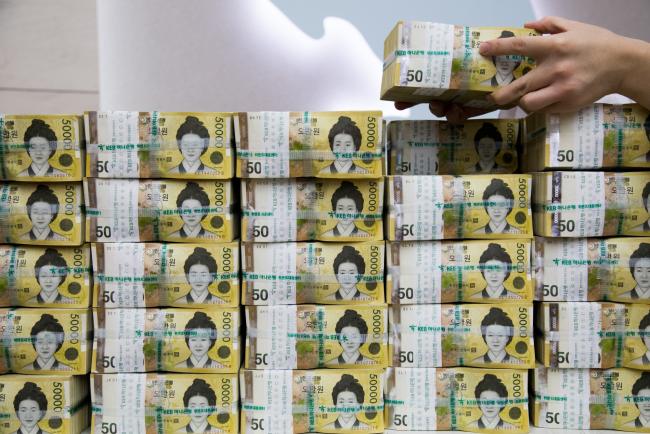(Bloomberg) -- Thursday’s unexpected contraction in the South Korean economy was met by a range of reactions in financial markets, from a flurry of activity in swaps to a mild indifference in equities.
The interest-rate swap curve shifted lower after data showed gross domestic product shrank 0.3 percent in the first quarter from the previous three months, versus expectations of an 0.3 percent gain. The currency extended its decline into a fourth day as the figures confirmed U.S.-China trade tensions and a technology downturn are taking a toll on Korea’s export-driven economy.
Here are three charts that illustrate how Korean markets reacted to the biggest contraction in the economy since 2008:
Interest Rate Swaps
Non-deliverable interest-rate swaps fell across the curve, led by longer tenors, as investors increased wagers on Bank of Korea action. While record household debt has prevented the BOK from easing policy so far, the weak data fueled speculation of a rate cut in the face of muted inflationary pressures.
The bad GDP numbers, “coupled with low inflation, ought to encourage the BOK to respond with easier policy rates,” said Rob Carnell, Asia-Pacific head of research and chief economist at ING Groep (AS:INGA) NV in Singapore. “I am looking for the BOK to cut this quarter by 25 basis points,” while the data “raises the possibility that they may have to cut more than once.”
Stocks
The GDP shock came hot on the heels of a series of corporate earnings disappointments, and stocks saw a modest decline. The benchmark Kospi Index has already been underperforming its regional peers this year, raising the risk global funds may unwind some of their $6.7 billion worth of net purchases in 2019.
Share price declines this week are less linked to disappointing economic data, which was already expected and priced in, and more to corporate earnings, said Park So-yeon, strategist at Korea Investment & Securities.
Currency Market
The combination of weak economic growth and dismal corporate earnings took a toll on the nation’s currency, with the dollar-won exchange rate jumping as much as 0.9 percent to 1,161.40, its highest since March 2017. Technical indicators suggest the bullish momentum could see the pair extend its advance toward 1,200. The won is already the worst-performing Asian currency this year, down about 3.6 percent against the greenback.
